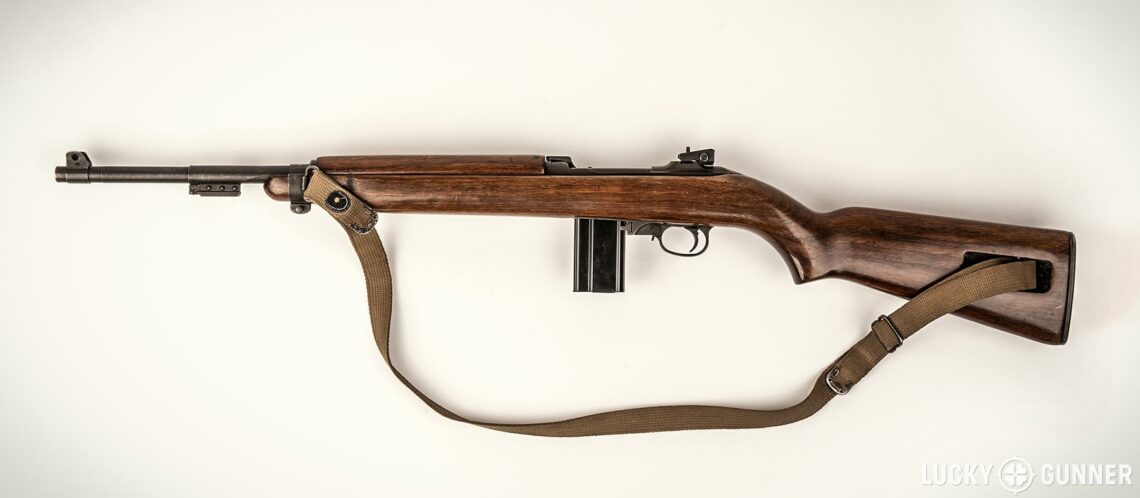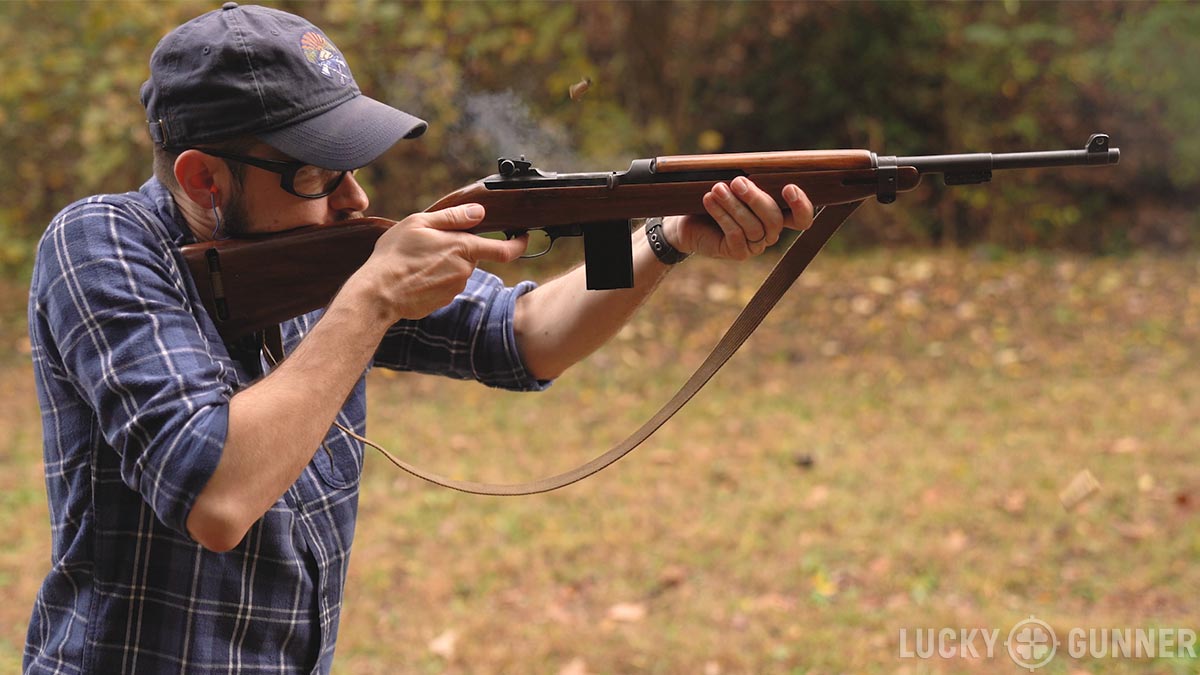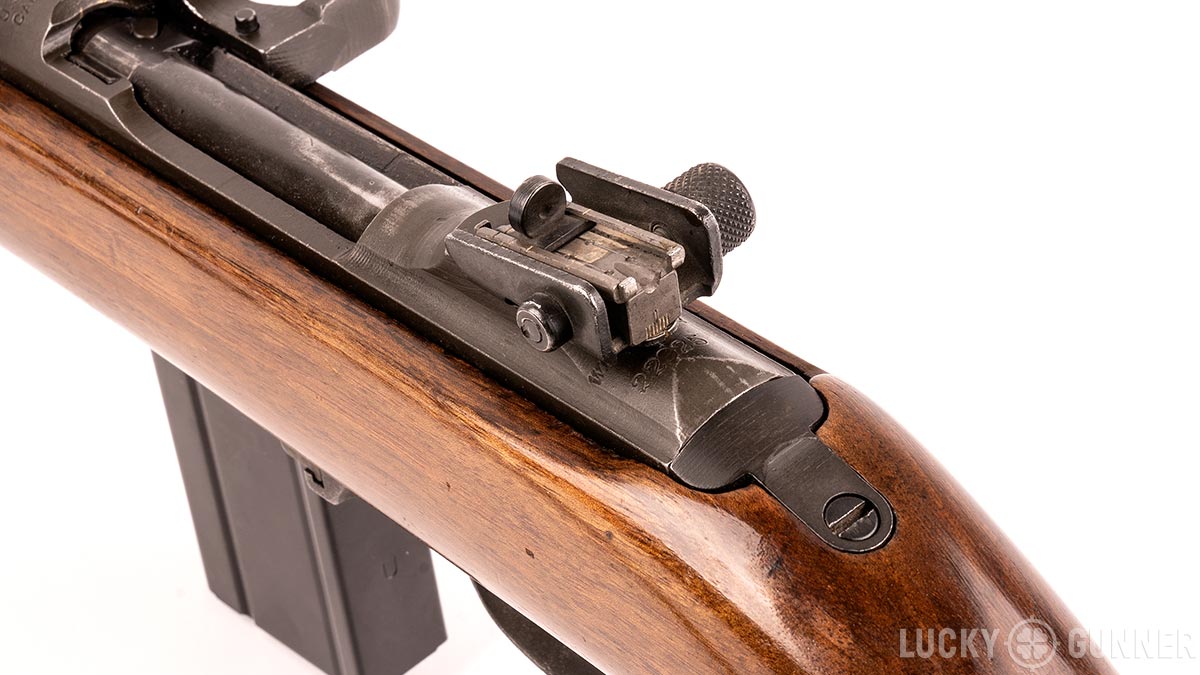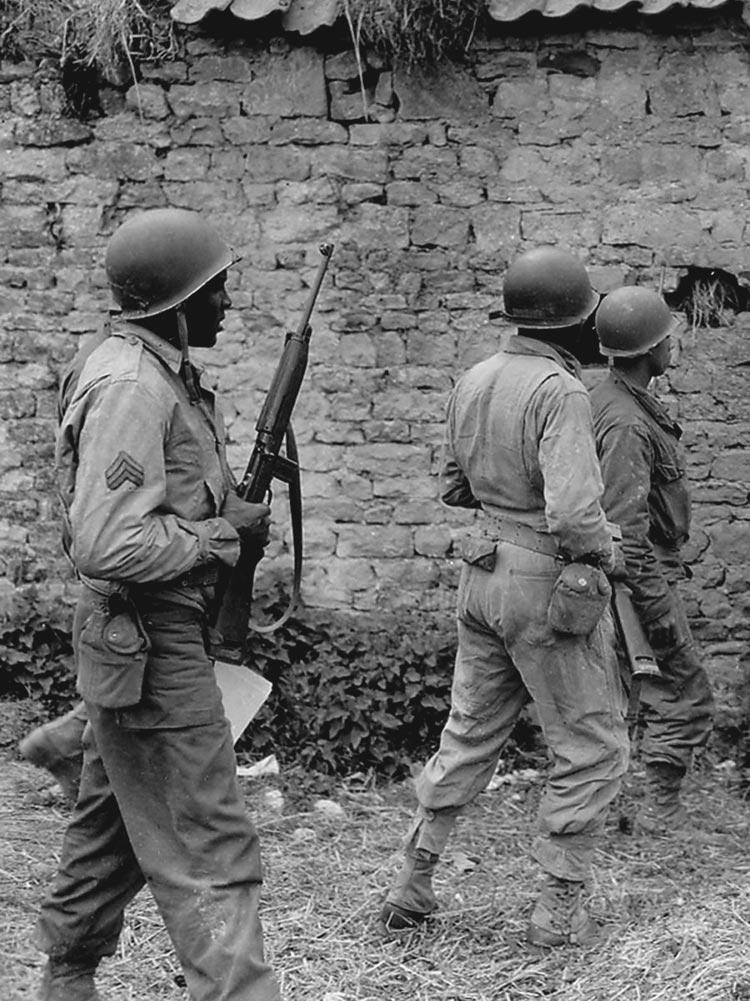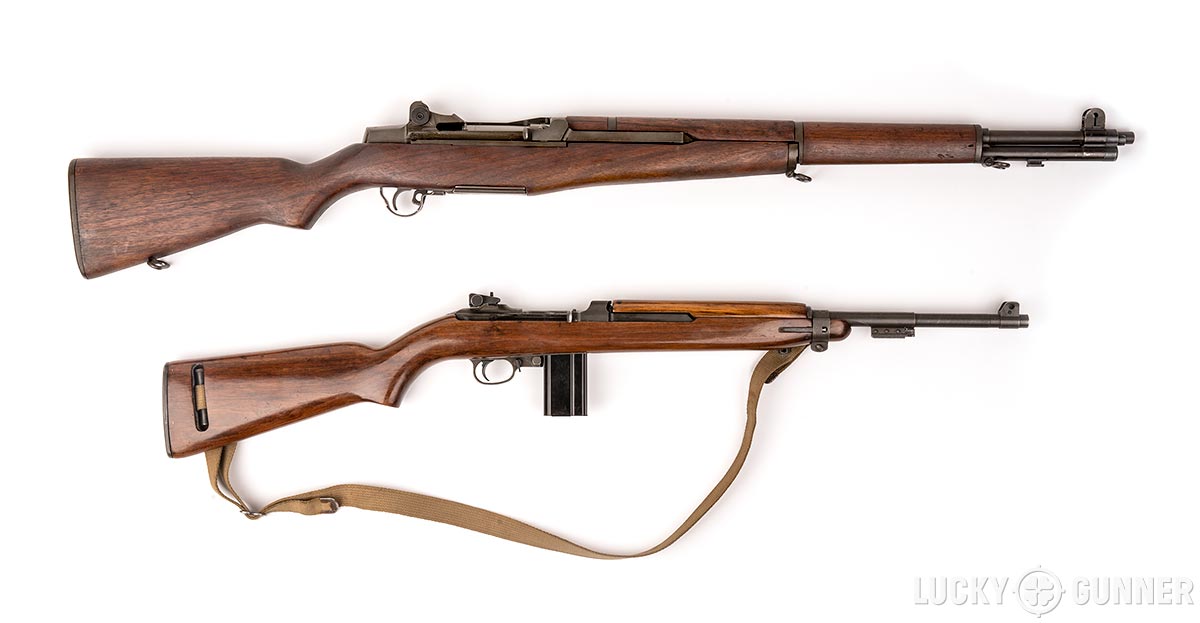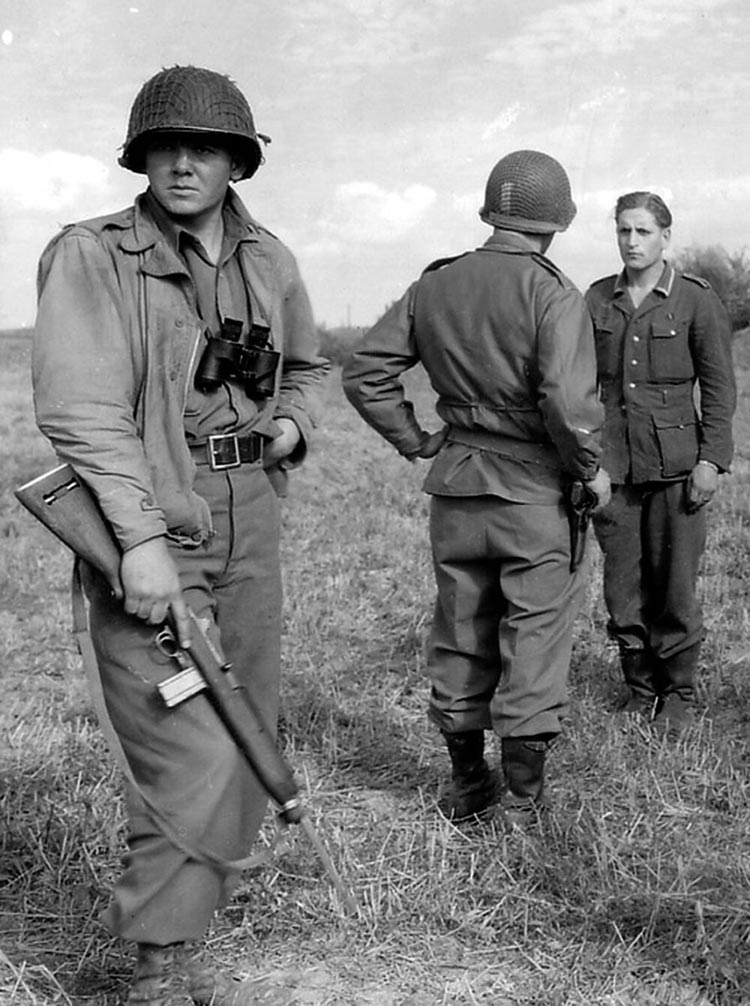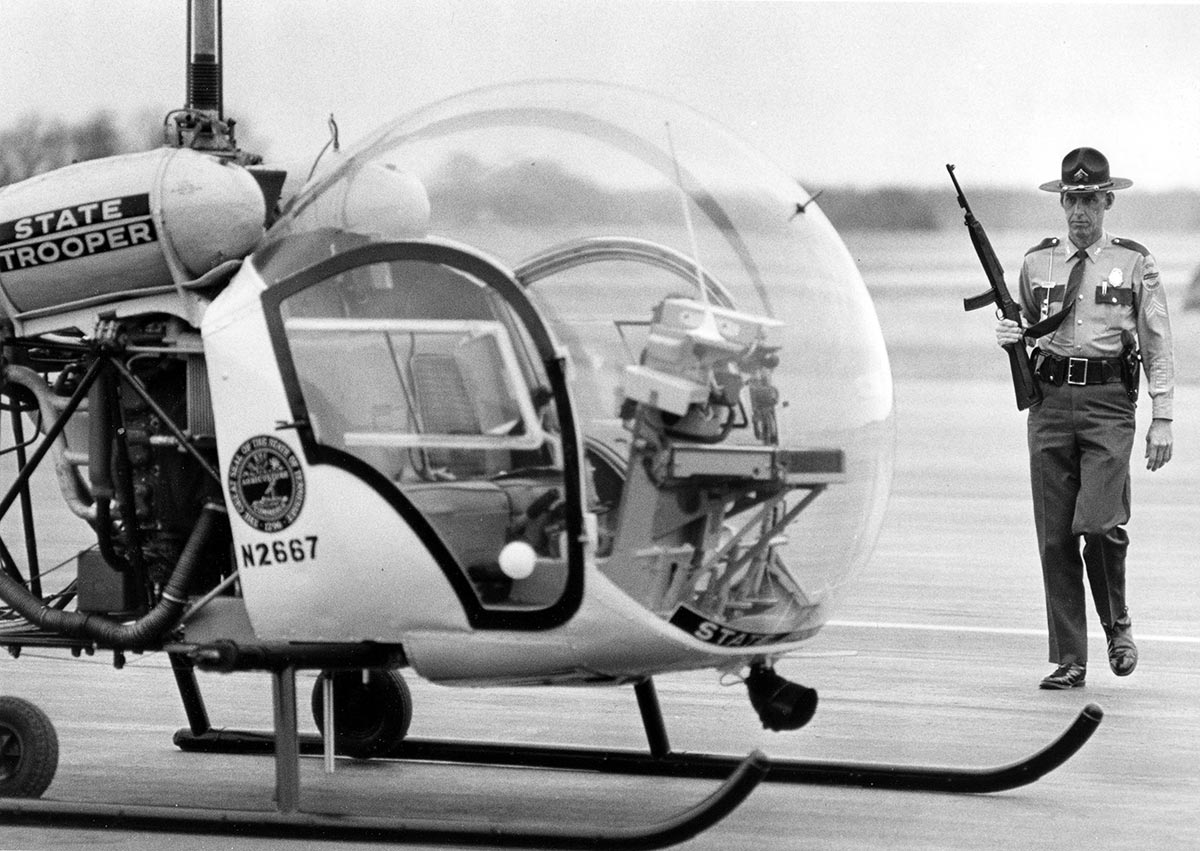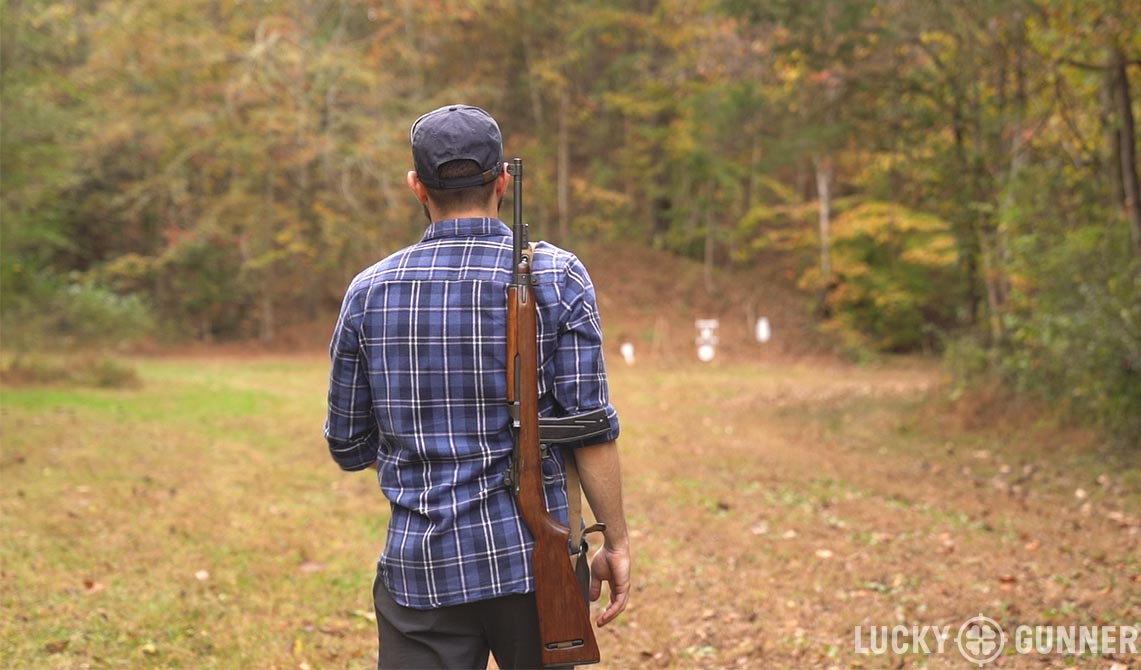The M1 Carbine is everyone’s favorite little rifle from WWII. Well, maybe not everyone’s. For a lot of people, it’s their favorite rifle to hate. Anyway, I really like it, and today I’m going to talk about why. Along the way, I’ll also cover some background and history of the M1 Carbine.
Details are in the video below, or scroll down to read the transcript.
Like a lot of people my age, I first developed an interest in the weapons of WWII right around the time Saving Private Ryan and Band of Brothers were released. Like most guys, I tended to gravitate toward the M1 Garand. It was kind of like the hero weapon of the war.
But from the moment I had a chance to pick up and hold an M1 Carbine, I knew I was really going to like that gun.
For the next several weeks, I’m going to be working on the ballistic gel testing for pocket pistol calibers — something I’ve been promising for a long time. That’s always a time consuming process and I have to put everything else on hold. So rather than give you guys nothing during that period, I thought I would put together a little series all about one of my favorite guns: the M1 Carbine.
This series might not be quite as polished as what we normally do. We’re going with kind of a bare-bones production approach with this one, but I think you guys are going to like it anyway.
In this installment, I’m going to go into some of the history and background of the M1 Carbine, both during the war and afterwards. But first, let’s just take a quick look at the rifle itself.
M1 Carbine: The Basics
The M1 Carbine first went into production in 1942, just after the US entered the war. The first thing everybody notices about the gun is just how light it is. It’s about 5.3 pounds unloaded. With a 15-round magazine fully loaded, it’s right at 6 pounds.
It’s a semi-automatic rifle with an 18-inch barrel. It fires the .30 Carbine cartridge — it’s a cartridge made specifically for this rifle. It’s kind of in between a mild rifle cartridge and a hot pistol cartridge. If you had to compare it to something, it has roughly the same muzzle energy as a .44 Magnum. It’s not quite in “real” rifle territory, but it’s also a lot hotter than most pistol rounds.
It feeds from detachable box magazines. The standard mags were 15-rounds. Very late in the war, they developed the M2 Carbine which was basically just a full-auto select-fire version of this. Those came with 30-round magazines that are compatible with the original M1.
The manual of arms is really not much different than you would expect from a modern rifle. You insert the magazine and it just clicks straight in there. You don’t have to rock it in or anything. Pull the charging handle and release it to chamber a round. It does not have a bolt hold-open on the last round. You know it’s empty when you get a click. Some of the later magazines did have a bolt hold-open feature. I’m not actually sure if this was a wartime feature or if this came later. This magazine will hold the bolt open as long as the magazine is in it. When you take the mag out, the bolt goes forward.
If you want to really lock the bolt open, you pull back the charging handle and there’s a little button here. You press that down and it keeps the bolt back until you pull the charging handle again and release it.
Right here behind the magazine release you have the safety. Down is safe, you flip it back to fire. This is a later safety. The very first safeties were push-button, but people would, understandably, get that confused with that mag release and accidentally dump the mag when they meant to push the rifle off safe.
Like most US military rifles from that era, it’s got pretty decent sights. The front sights are protected with these little wings here. The rear sight has a knob to adjust the windage. Elevation is really just these different “clicks” you have for distance. The default position is 100 yards, then you can click it back to the 200 position, then 250, and 300. The cartridge is really not useful beyond 300 yards, so that’s as far as the sights go.
There are a lot of varying opinions about the M1 Carbine. People tend to love them or hate them, both now and when they were still in military service.
The M1 Carbine in WWII
The original idea behind the M1 Carbine was essentially to replace the 1911. They wanted a gun for support troops who were probably not going to end up on the front lines of combat — something that was easier to use, more effective, and easier to train guys to use than a pistol. The M1 Carbine is what they came up with.
But it didn’t take long before it made its way onto the front lines. Other troops started to see the utility of a really light rifle, especially one that was almost half the weight of the M1 Garand. So guys who were in combat who had other stuff to carry like machine gun ammo, radios, or a bazooka or something — they were the first to gravitate to the carbine beyond the support troops.
They actually developed the M1A1 — a version with a folding wire stock — that was made specifically for paratroopers. So a lot of the criticism of the M1 Carbine comes from people trying to use it to replace the main battle rifle and that’s not something it was ever really intended to do.
Everyone seems to agree that it was great as a replacement for a pistol. Where the disagreement comes from is how effective it was as a front line fighting weapon.
When you pick one of these things up, it is really easy to see the appeal. You can’t really downplay just how much more convenient this gun is when you’re doing anything other than fighting.
This is an M1 Garand and I love shooting these things — they’re a lot of fun. But they are not much fun to carry around. It’s about 7.8 inches longer than the M1 Carbine. It weighs right at 10 pounds when it’s fully loaded. It’s a very effective combat weapon when you’re the only guys on the battlefield with semi-automatics and the enemies are armed with bolt-action rifles. But it’s a super heavy gun and that is not trivial for a combat soldier.
One of the best resources I’ve found about wartime weapons is a book called Shots Fired in Anger by Lt. Col. John B. George. He was, basically, a gun nut — he was a marksman, a rifle competitor, and a hunter before the war. Then he went into WWII as an officer and wrote an account of his experiences. He also wrote a lot about the different weapons and equipment they were issued. He was a fan of the M1 Garand, but his main criticism of that gun was the weight. Primarily because when you’ve got a guy who is hauling that gun around on a long march and he gets where he’s going and he’s more fatigued, that has an impact on how effective he is in combat.
The weight of the M1 Garand is also one of the things that makes it a really shootable gun. It helps to soak up some of that recoil. So I’m not saying everyone would have been better off if they had carried a .30 Carbine in the war. But the issue of weight is not a trivial one, it goes beyond simply convenience.
After reading a lot of different accounts of experiences from WWII, it seems like the guys who were really big fans of the M1 Carbines had three things in common. One, they actually used the gun in combat. They weren’t higher-up officers who were solely relying on second-hand accounts. Two, they were pretty good marksman to begin with. They were hitting what they aimed at — they weren’t just blindly firing all the time. And three, they actually understood the limitations of the carbine and whenever it made sense and they were able to, they would switch it out for a different gun.
The main criticisms of the M1 Carbine really all have to do with the ammunition. The main complaint was that it didn’t have enough stopping power. That’s a term I hate to use today because it comes with a lot of baggage, but that was how they would have said it back then. It doesn’t have as much stopping power as the .30-06.
There were also complaints that it didn’t have enough penetration. It’s just not as powerful — it’s not going to punch through hard cover like brick walls and a lot of thick brush like the .30-06 would. It also didn’t have the range of the .30-06. On paper, it’s a 300-yard caliber but realistically, out of the M1 Carbine, it’s probably more like a 150-yard gun.
On the other hand, the .30 Carbine does have better ballistics than .45 ACP, generally speaking. It’s got more penetration. It was more controllable than a submachine gun — more accurate than a submachine gun. So for most stuff, except for very up-close fighting, it was a better gun than the Tommy Gun or the M3 Grease Gun.
By the way, those guns were also really heavy. I don’t know if you’ve ever picked one up, but they’re a lot heavier than they look. So, again, the convenience of carrying around the carbine, in a lot of cases made it a superior weapon to a submachine gun.
The M1 Carbine in Korea and Beyond
After WWII, the M1 Carbine stayed in service. It was used in Korea. It was criticized a lot in that war because of reliability issues in cold weather. A lot of that criticism may have been related to the lubrication they were using at the time. Also, the M2 full-auto variant of the gun was generally not as reliable as the semi-auto.
By the time the Vietnam War rolled around, both the M1 Carbine and the M1 Garand had been replaced with the M14 (which would then be replaced a couple of years later with the M16). So the M1 Carbine was being phased out of use.
We gave them to the South Vietnamese and to a lot of other countries all over the world. We made 6.1 million of these things — more than any other small arm during WWII, and that was in just a three year period. So they were extremely popular and after we decided we didn’t have any use for them, we loaned them to allies all over the world. It was, in some ways, like the NATO version of the AK-47. Not as good as the AK in most respects, but that was what we had to give all of our allies who were fighting during the Cold War.
Surplus M1 Carbines Come Home
A bunch of them also ended up on the American commercial market sold as surplus. People used them for hunting and plinking and really as a general-purpose carbine. They were like the AR-15 before ARs were as available and affordable as they are now.
A lot of the surplus M1 Carbines also ended up in the hands of law enforcement. Most cops during the 20th century were using shotguns or revolvers. There were not a whole lot of rifles in there. But if you did need a rifle, the M1 Carbine was kind of ideal for police work. It didn’t penetrate like a full power rifle, but that was probably a good thing if you’re in an urban environment. The effectiveness of .30 Carbine is much improved when you use soft-point ammo rather than the FMJ the GIs were stuck with.
One of the most prominent users of the M1 Carbine among the police was Jim Cirillo of the NYPD Stakeout Squad. He said they actually had more one-shot stops with the M1 Carbine than they did with the 12 gauge. A lot of that probably has to do with the fact that the buckshot they were using back then wasn’t very good. But suffice it to say that the M1 Carbine did what they needed it to do in all of those shootings they got in back in the 70s.
The AR-15 is something like 60 years old now, but a lot of people don’t realize that it wasn’t really a popular civilian gun until fairly recently. You couldn’t just walk into any gun shop and expect to pick up an AR-15 — at least not at any affordable price. So for most of the 20th century, if you wanted a light rifle that fired an intermediate caliber that was semi-automatic and you wanted more than 10-round magazines, the M1 Carbine was really one of your only options. It was certainly the only option if you wanted to find something affordable and easily available.
As time went on, the supply of carbines dried up. There were commercial copies of the M1 Carbine that were never quite as good as the GI versions. The prices on the GIs went up. They were no longer 200 bucks — you couldn’t just pick them up cheap at the gun show with a case of ammo.
These days, if you’ve got enough money to pick up a decent M1 Carbine, then you can also afford an AR or an AK or a pistol caliber carbine that can do everything the M1 can do and probably do it better. So, in that respect, it doesn’t really make a whole lot of sense to use an M1 Carbine for any practical purpose now… unless you already happen to have one. It’s still a very effective rifle. The soft point ammo is effective. And if you know what you’re doing, you can make them run and you can still get some pretty good magazines.
I have yet to find another long gun that’s as light and handy and well-balanced as the M1 Carbine. They’re still as fun to shoot as any other gun out there.
In the next installments of our little series on the M1 Carbine, we’re going to take a closer look at the ballistics of the .30 Carbine cartridge. We’ll also look at some things you can do to keep these things running and a few modern updates to help them compete with some of the other contemporary options.
